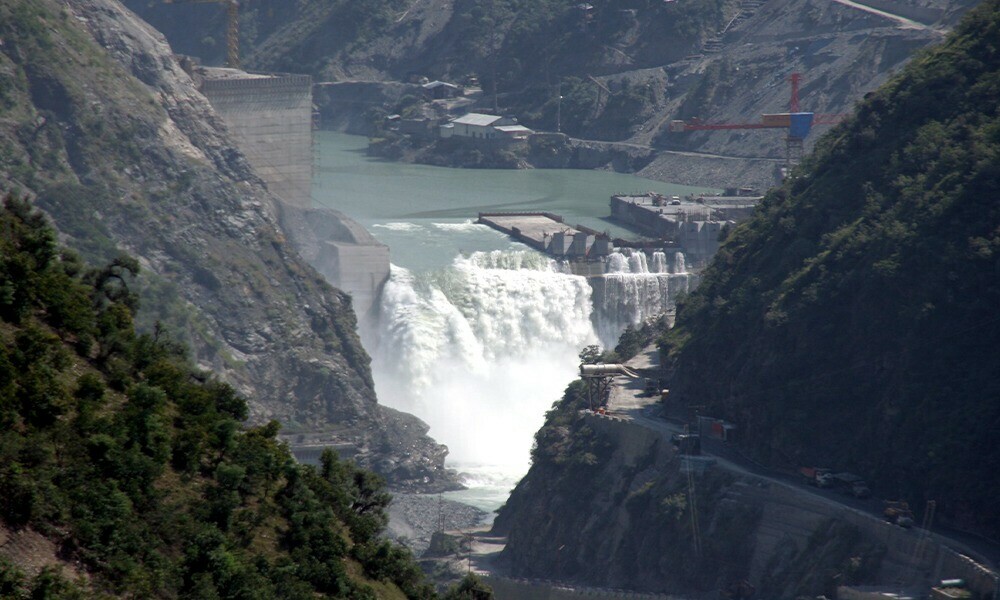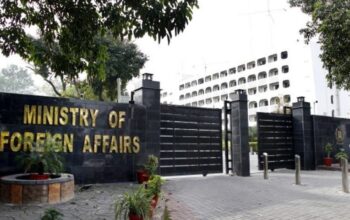By Staff Reporter
India’s abrupt suspension of the Indus Waters Treaty on April 24, 2025, following a deadly terrorist attack in Kashmir, has thrust South Asia into a perilous standoff, with Pakistan warning that any tampering with its water lifeline would be an “act of war.” The decision, outlined in a sharply worded letter from India’s Jal Shakti Ministry Secretary Debashree Mukherjee to her Pakistani counterpart Syed Ali Murtaza, dismantles a 65-year-old pact that has endured wars and crises, exposing the fragility of trust between two nuclear-armed neighbors.
The catalyst was a brutal attack on April 22 in Pahalgam, a picturesque Kashmiri town, where gunmen killed 26 tourists. India swiftly pointed the finger at Pakistan-based militants, a charge Islamabad flatly denied. Mukherjee’s letter frames the suspension as a response to “sustained cross-border terrorism” that has created “security uncertainties” impeding India’s ability to utilize its treaty rights. But India’s grievances extend beyond security. The letter cites “fundamental changes in circumstances” since 1960—population growth, clean energy demands, and Pakistan’s alleged refusal to renegotiate—as justification for holding the treaty “in abeyance with immediate effect.” The language is uncompromising, reflecting a broader shift under Prime Minister Narendra Modi toward assertive posturing, where water becomes a lever to signal resolve.
Pakistan’s response was equally unyielding. In an emergency session of its National Security Committee, chaired by Prime Minister Shehbaz Sharif, the government branded India’s move “belligerent” and vowed to safeguard water as a “vital national interest” for its 240 million people. “Any attempt to stop or divert the flow of water belonging to Pakistan will be considered an Act of War and responded with full force across the complete spectrum of National Power,” the NSC declared, a statement that blends defiance with existential dread. Foreign Minister Ishaq Dar, addressing reporters, insisted the treaty, brokered by the World Bank, cannot be unilaterally scrapped, warning that Pakistan could suspend bilateral pacts like the 1972 Simla Agreement if India persists. Attorney General Mansoor Awan reinforced this, stating, “If the treaty is to be ended, it would end by an agreement between the two countries.”
The Indus Waters Treaty, signed in 1960 after a decade of tense negotiations, is no ordinary agreement. It allocates the Indus River system’s six rivers—India controls the eastern Ravi, Beas, and Sutlej, while Pakistan relies on the western Indus, Jhelum, and Chenab—ensuring a delicate balance for agriculture, industry, and urban needs. Its survival through three wars and countless skirmishes owes to its technical focus, sidestepping the political venom of India-Pakistan relations. That India now risks this stability speaks to a calculated shift, but one fraught with peril. For Pakistan, the western rivers are a lifeline; any disruption could cripple its economy, where agriculture accounts for a fifth of GDP and employs nearly half the workforce. India, less dependent on these waters, holds a strategic advantage but courts global censure for upending a binding pact.
This isn’t India’s first flirtation with water as a weapon. Modi’s 2016 remark that “blood and water cannot flow together” after a similar attack signaled a willingness to rethink the treaty, though action was restrained. The Pahalgam attack, striking a tourist hub, likely amplified domestic pressure for a political response, with Modi’s base demanding retribution. Yet, the unilateral suspension—without evidence of immediate water diversion—raises questions about intent. Is this a symbolic jab to rally nationalist sentiment, or a prelude to tangible restrictions? The letter’s omission from India’s broader demarche to Pakistani diplomats, as Dar noted, suggests a strategic ambiguity, keeping Pakistan guessing.
Pakistan’s alarm is palpable, but its rhetoric risks escalation. The “act of war” warning, while reflecting genuine fears, evokes a military response that could spiral unpredictably. The threat to suspend the Simla Agreement, which governs the Line of Control in Kashmir, is particularly ominous, as it could unravel a framework that, however imperfect, has contained outright war. Pakistan’s dependence on allies like China, which has invested heavily in the region, adds another layer. Beijing’s silence so far belies its interest in a stable Pakistan, and any Indian move to choke water flows could prompt a Chinese response, complicating the geopolitical chessboard.
Water disputes are not new—India and Pakistan have sparred over dams like Kishanganga—but suspending the IWT is a leap into uncharted waters. Economically, Pakistan faces potential devastation, with millions at risk of food and water shortages. Environmentally, altered river flows could degrade ecosystems, affecting both nations. Diplomatically, India’s move challenges the World Bank’s authority as treaty guarantor, while inviting scrutiny from global powers wary of South Asian instability. The United Nations’ call for “maximum restraint” feels like a whisper against the roar of nationalist fervor on both sides.
India’s suspension seems less about immediate water control and more about signaling dominance, leveraging its upstream position to pressure Pakistan. But this assumes Pakistan’s response will be restrained, a risky bet given the stakes. Pakistan’s belligerent tone, while justified by its vulnerability, overlooks the need for de-escalation, as military posturing could invite miscalculation. Both nations are trapped in a cycle of mistrust, where Kashmir’s violence and water’s scarcity amplify each other, with no clear off-ramp.
Since partition in 1947, India and Pakistan have viewed each other through a lens of suspicion, with Kashmir as the enduring fault line. The IWT’s endurance was a rare counterpoint, proof that cooperation could outlast enmity. Its suspension now risks not just water security but the fragile architecture of bilateral restraint. If India follows through with tangible restrictions, or if Pakistan escalates militarily, the region could tip toward a crisis neither can fully control. The World Bank’s mediation, if both sides agree, offers a slim hope, but the clock is ticking. India and Pakistan, bound by geography and divided by history, face a choice: double down on confrontation or seek a path back to dialogue.
Copyright © 2021 Independent Pakistan | All rights reserved




